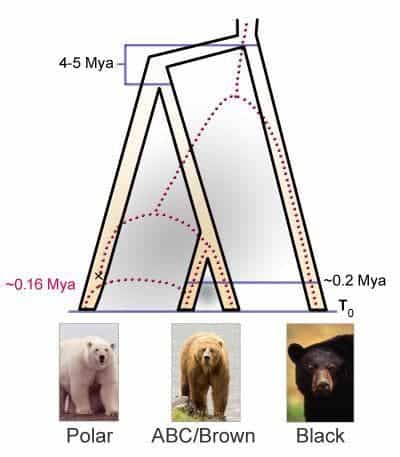A new research has found after analyzing the genomes of polar bears and brown bears that the two species interbred, after the two species split some 5 million years ago, during periods of warmer climate. Recent evidence suggests this is happening today as well, as an effect of global warming.
The team of scientists from Pennsylvania State University and the University at Buffalo, sequenced the genomes of polar and brown bears and found that polar bears evolved into a distinct species some four or five million years ago. Previously polar bears were thought to be a lot younger as a species, but this new research also takes into accounts its rather complicated interbreeding history with brown and black bears as well.
“Maybe we’re seeing a hint that in really warm times, polar bears changed their life style and came into contact, and indeed interbred, with brown bears,” says Stephan Schuster of Penn State.
Schuster and colleagues sequenced the genomes of three brown bears and a black bear and compared them with the genomes of polar bears, one modern and the other obtained from remains from a 120,000-year-old polar bear. “Very few vertebrate species have such comprehensive genomic resources available,” says Schuster.

Previous research, which only looked at small segments of DNA, had polar bears as being only 600,000 years old as a distinct species. Data from Schuster’s team suggests after split between polar and brown bears, the two species remained isolated for some time, allowing genetic changes to accumulate, before interbreeding more recently, their analysis indicates.
“We showed, based on a consideration of the entire DNA sequence, that earlier inferences were entirely misleading,” says Webb Miller of Penn State.
Hybridization between the two species has continued to this day. As Arctic sea ice upon which they live recedes ever more and polar bears become forced to spend increasingly more time on land, this trend is set to intensify.
“Recently, wild hybrids and even second-generation offspring have been documented in the Northern Beaufort Sea of Arctic Canada where the ranges of brown bears and [polar bears] appear to overlap, perhaps as a recent response to climatic changes,” the researchers write.
The findings were presented in the journal PNAS.


